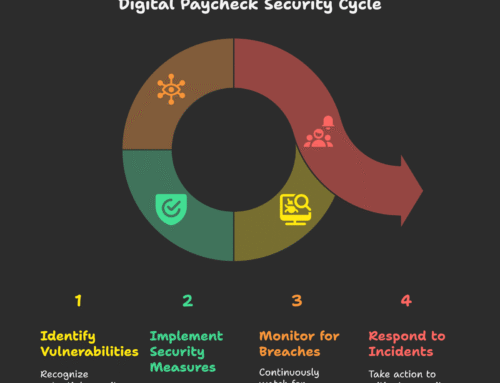Whether your company is a strong supporter of flexible work schedules, or ardently against the so-called “new-normal”, the fact is that hybrid and remote work looks like it’s here to stay. The numbers don’t lie, with an estimated 74% of US companies currently operating or planning to implement a hybrid work model in the near future supported by 44% of employees and 51% of all employers.
Whilst the benefits of hybrid working have been well documented in recent years, ranging from measurable increases in productivity to perceived improvements in employee work-life-balance, that’s not to say that completely changing the way we approach our work doesn’t come without challenges.
To successfully implement and manage a hybrid work model, HR teams must upskill and collaborate with IT staff to ensure that a more hands-off environment doesn’t lead to a directionless workforce. From accessibility to wellness, security to productivity, what tech will HR need under hybrid working?

Image by Freepik
Virtual onboarding solutions
Many office-based and in-person teams will have found successfully onboarding new staff members during pandemic restrictions to be a difficult task. Beyond the struggles of technical difficulties and home Wi-Fi signals, research suggests that humans struggle to communicate in virtual environments.
Thankfully, with a few years of experience most HR teams now know how best to navigate virtual meetings in an effective manner, though if hybrid working is to become more commonplace, it’s worth investing in foolproof virtual onboarding software to enhance employee experiences from day one.
By making use of a comprehensive virtual onboarding program rather than bridging gaps with a string of separate software solutions, HR professionals are able to combine video conferencing, orientation materials and relevant training resources within one easily navigated and monitored platform, with additional benefits in the ability to consistently improve processes through combined collected data.
Intelligent access control
Alongside the rise of hybrid work models, many modern employers are beginning to see the benefits in allowing staff to work flexible hours. 67% of small businesses currently offer some degree of flexitime, with 77% of employees considering this perk as a major consideration when job hunting.
Much like hybrid work, research suggests that staff working flexible hours may actually be more productive over the course of an average workday, but choosing to operate an office space outside of standard working hours will require HR and security teams to reassess safe property access policies.
Rather than hiring additional staff to manage out-of-hours access, or entrusting employees with easy-to-lose traditional keys, teams should consider installing and operating monitored access control systems whereby security teams can set parameters for building entry using remote-access controls.
For example, an RFID access control system can be programmed to:
- Only allow access between certain hours
- Only allow access to pre authorized persons
- Send real-time alerts if doors are tampered with
- Be connected to existing tech like CCTV and alarms
Personalized cards are issued to employees allowing security teams to monitor who has accessed the property at any given time and credentials can be adjusted or revoked remotely if any issues should occur, resulting in a simple and easy-to-manage solution to flexitime building security.
Accessible wellness resources
It’s clear that there are numerous benefits to implementing some degree of hybrid work in most office-based work environments, but HR teams should be aware of the potential for negative physical and mental health issues to affect some members of staff without the social aspects of traditional work.
Studies suggest that seven in ten employees working from home report strong feelings of isolation, and 63% feel less engaged with their fellow team members, indicating that HR managers should be considering the implementation of effective wellness resources to reignite workplace comradery.
By providing access to cloud-based wellness software, mobile apps and support resources via official company portals, HR teams can help staff to plan achievable wellness goals and incentives designed to combat negative emotions and foster a supporting atmosphere for hybrid working environments.
People analytics software
To ensure that all work departments are meeting productivity, performance and efficiency targets, HR staff must have access to detailed records of performance, attendance and expenses. Relevant data in these fields will help teams to improve recruitment, development and training processes, but keeping track of such metrics can become increasingly difficult under erratic hybrid work schedules.
Integrating people data analytics software into existing HR dashboards will allow managers to view relevant data alongside already present HR tech stack and performance insights to help highlight and anticipate any oncoming challenges without the need for regular in-person performance reviews.
Modern software solutions even make use of AI tools and machine learning to produce actionable insights from collected data that human operators may overlook, helping to improve efficiency and productivity with the support of solid and dependable data in an easily navigated viewing format.
Conclusion
As we move further into the 2020’s, it’s becoming clear that our approach to traditional work will continue to grow and change in line with modern attitudes. By most measurable metrics, it appears that hybrid working can bring a significant number of benefits to both employers and staff, though as with any fairly novel concept, potential issues can arise if teams aren’t prepared with proactive solutions.
By allowing HR professionals to combine their knowledge with IT and security teams, most negative aspects of hybrid work can be addressed and mitigated. Through well-planned onboarding tools, adaptive building security, accessible wellness resources and data analytics, HR teams can approach hybrid work with preparedness and act to facilitate a productive and positive workplace environment.






Leave A Comment